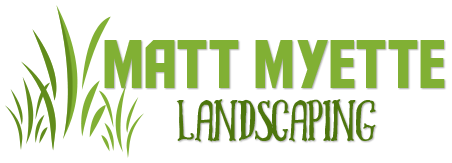Through committed diligence, proper maintenance, appropriate treatments and care, your grass can be a healthy, green, and lush lawn. To keep the lawn soft and aesthetically pleasing, it takes a lot more than routine watering schedules and mowing. In order to get that envious lawn you lust for, its important to follow the recommended fertilizer schedule throughout the year. By simply fertilizing your lawn, you are providing it with strengthening nutrients that can help it better endure the elements, intense weather conditions, even pest invasions. At this time, we at Matt Myette Landscaping would like to stress the importance of fall fertilizing application and how to control the broadleaf weeds that try to take root in your well groomed lawn.
When is the Best Time to Use Fertilizer in the Fall?
September through October is the designated time frame for the fall fertilizing treatment. It will be better to skip the fall fertilizing and do the winter treatment appropriately if you do not get the fertilizer on by October 31. The fall fertilizing is the best time of year to perform your annual fertilization maintenance if you only deem to fertilize once a year, but four times a year is optimal for the health of your lawn. Do note, however, that if you happen to experience a brief warm period following the first hard frost of fall, wait to perform your fall fertilizing treatments, doing otherwise can cause excessive top-growth, reduce the root storage, and increase the chances of winterkill.
How to Treat & Care for Lawn in the Fall
Even when the temperatures drop, continue your dedication to trimming and mowing the lawn though the growth may slow down. Regular trims can stimulate the root growth and make it stronger for the winter months. Be sure to keep the leaves cleaned up and do not left the clippings linger on the surface or the grass can experience ill effects. Keep the foot traffic to a minimal following your fertilizing treatment, too much foot traffic during the fall fertilizing treatment and cold temperatures can easily damage the grass.
Applying Pre Emergent Weed Control in the Fall
Better treated during the fall are the broadleaf weeds; dandelions, clover, plantain, and so on. Broadleaf weeds that are blemishing your lawn are best dealt with by pulling or digging them out. There are some excellent herbicide treatments that can be applied to destroy the broadleaf weeds in the event they are excessive and manual removal is not practical for infested lawns. Leaving the weeds strong and well nourished and grass weak and defenseless will be the result of any of these weeds that are permitted to stay in your turf, they will steal water intended for your grass and consume the fertilizer.
Fall Lawn Schedule
Keeping your grass dense and prosperous is the best prevention in broadleaf weeds. To dramatically improve the quality of your lawn, do quarterly fertilizing treatment, routine watering schedule, regular mowing, and trimming maintenance. The broadleaf weeds can be kept to a minimal if not prevented, by performing these tasks, giving you beautifully green, lush, dense, and healthy turfs.
Landscape Design, Lawn Care & More in Greater Morrisville, Stowe, Hyde Park, Elmore, Cambridge, Morristown & Lamoille County, Vermont
If you need assistance getting your lawn healthy and free from weeds, give the professionals from Matt Myette Landscaping a call and let our experts get started!








